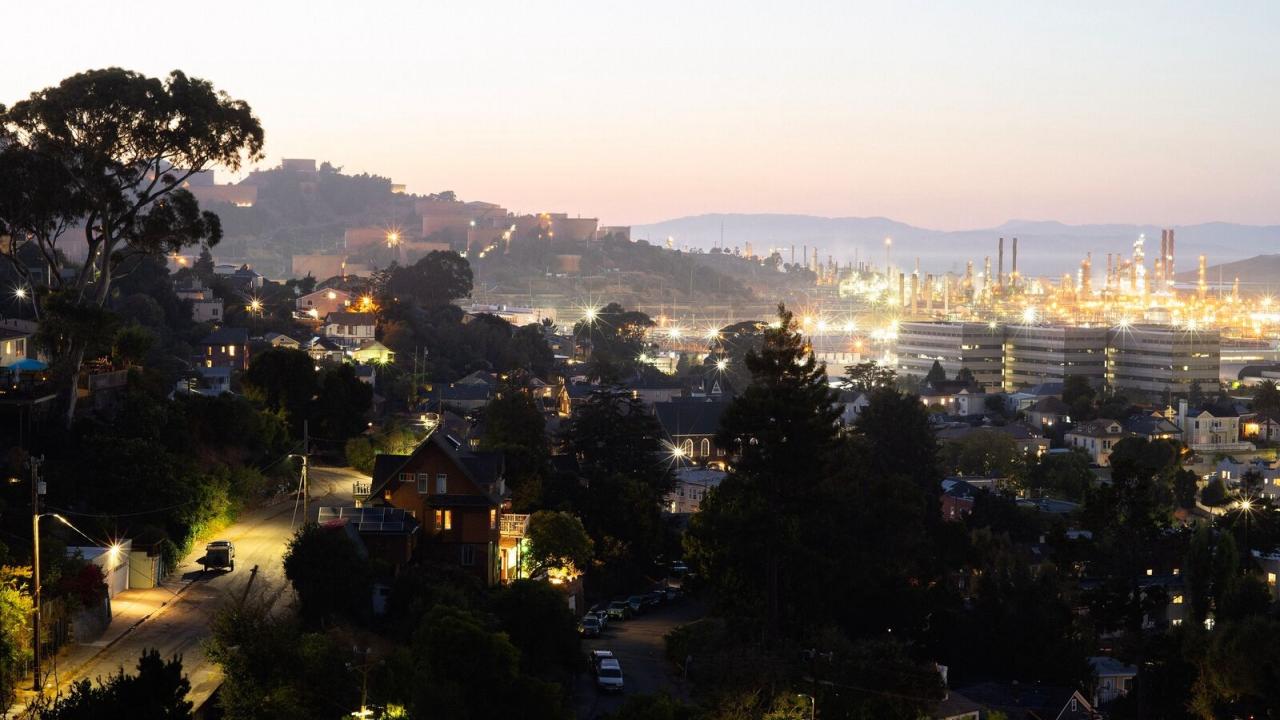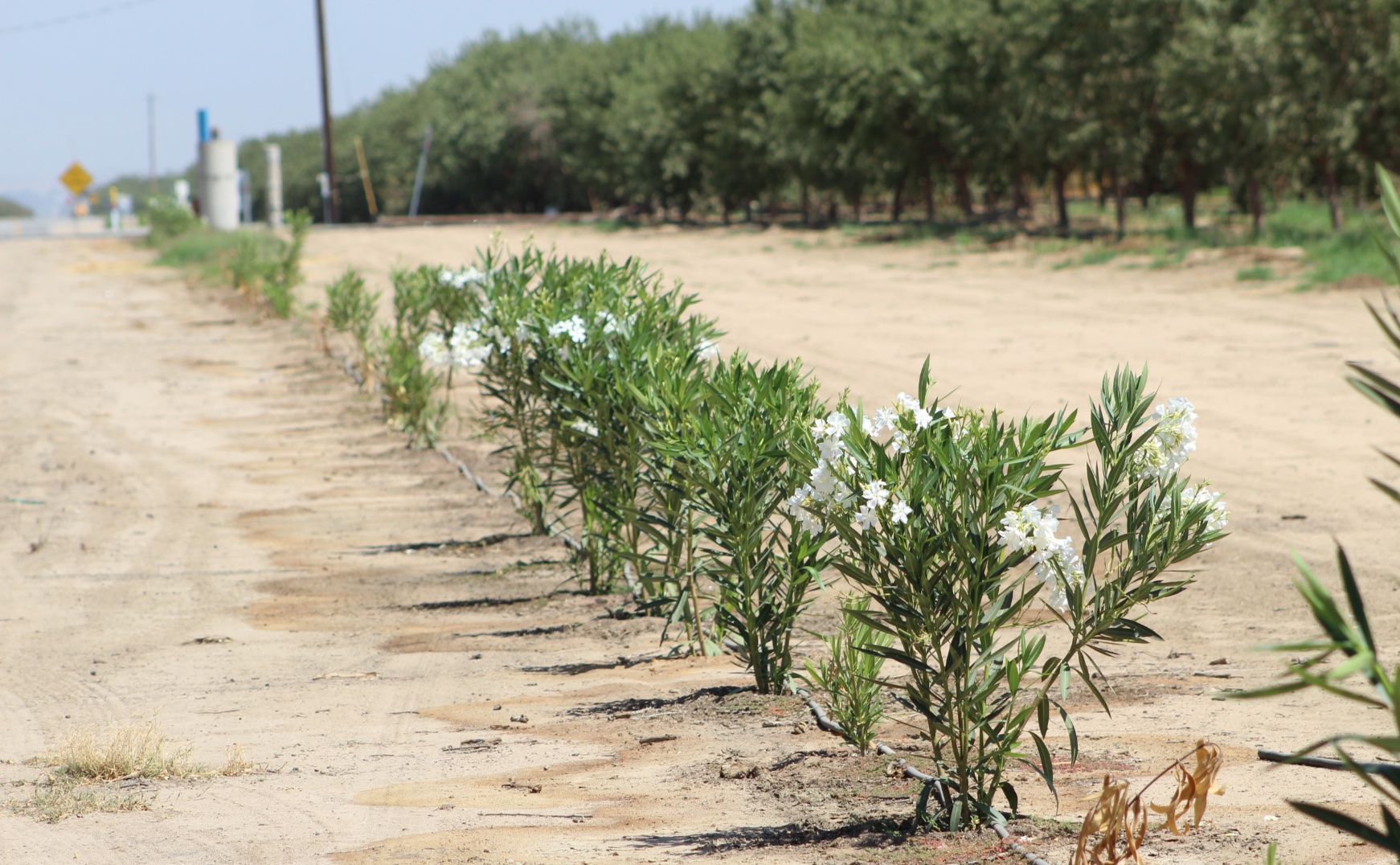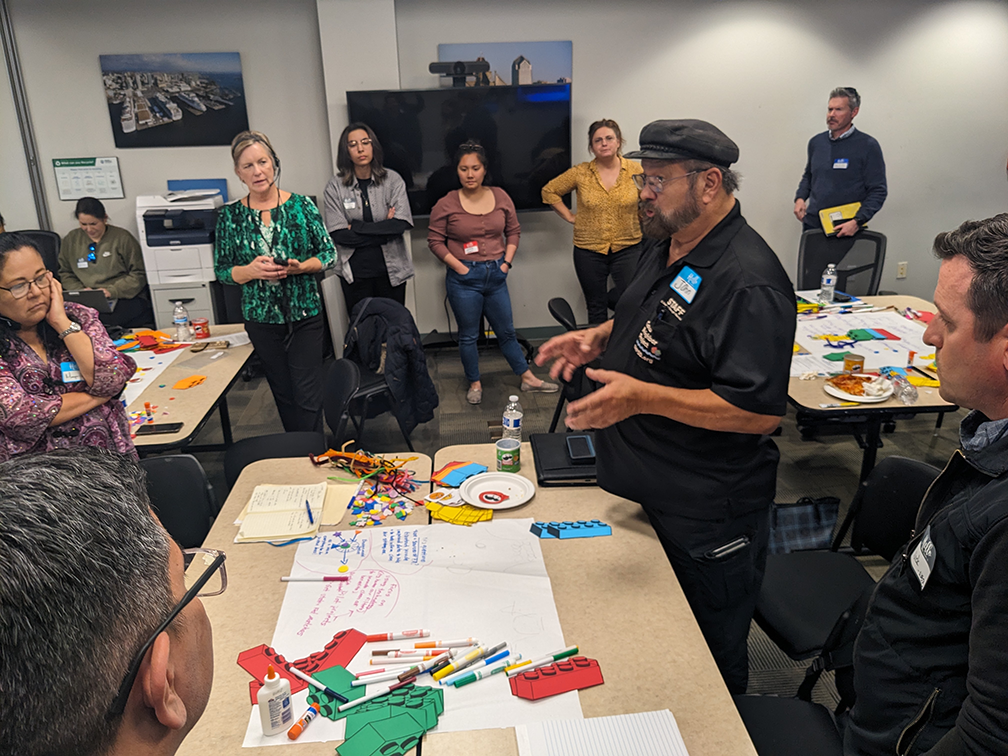
CA Clean Air Law Making Strides in Overburdened Neighborhoods
Study Finds Progress in Environmental Goals, Emission Cuts and Community Voice
For years, families in the Bay Area city of Richmond have lived with smoke and chemicals drifting from a nearby oil refinery. That kind of exposure poses serious health risks, but a new report from UC Davis shows how California’s Assembly Bill (AB) 617 is helping residents take a more active role in monitoring and reducing air pollution in their neighborhoods.
Signed into law in 2017, AB 617 supports locally driven emissions reduction plans in 19 communities across the state. Through Community Steering Committees, residents, local organizations, state and local agencies and businesses work together to shape solutions and ideas for cleaner air.
Professor Jonathan London and Peter Nguyen, both with the Department of Human Ecology, led the independent study that takes a close look at how the law has been implemented across seven of AB 617 selected communities, what’s going well, what still needs work and recommendations to keep it going.
London, a professor of community and regional development, said in some cases, the policy has achieved significant reductions in harmful air pollutants. He adds that while it’s still too early to know exactly how much it has improved the air, the report shows it’s already changing how decisions are made. According to the report, all seven communities in the study experienced growth in community leadership, particularly in places such as the Richmond/North Richmond/San Pablo region and southern portions of Fresno, which are making the biggest strides by engaging residents early and encouraging them to take leadership roles.
The report also finds that the policy has led to organizational changes within air districts, including new staff and offices focused on environmental justice and community priorities.
“Community voice needs to continue to be at the center of this policy,” London said. “It's shown to be so successful, and the lesson learned is all environmental and health policies have that active community engagement and really makes it better and more effective.”
The report also points out a few things that could be better, like making sure agencies follow through on what communities say they need, and working more closely with cities, counties and other partners.

New ideas in action
The report points to several innovative ways communities are reducing pollution under the law. From planting trees in urban areas to rerouting heavy-duty diesel trucks away from residential neighborhoods, researchers say the law is pushing forward local solutions with statewide potential. London said that in the farming town of Shafter, residents living near almond orchards are testing vegetative barriers, which are rows of shrubs planted along the edge of the fields to help block the dust clouds that kick up during harvest and drift toward nearby homes and schools. Also in Shafter, residents pushed for a policy to notify people before nearby pesticide spraying so they could take precautions like staying indoors. The idea eventually gained the support of the Legislature and the California Department of Pesticide Regulation made it a statewide rule by creating the SprayDays California program where anyone can sign up for alerts online.
A process to develop a new Community Benefits Policy was launched in the Richmond region to guide the investment of tens of millions of dollars from refinery violation fines into local health-promoting projects. And in the industrial Los Angeles-area communities of Wilmington, Carson and West Long Beach, the AB 617 emissions reduction plan includes multiple regulations on refineries, ports and warehouses.
“AB 617 is trying to protect the health and well-being of people in these communities, and to do that, it's requiring and it's stimulating the development of green technologies,” London said. “By spurring technological innovation, investments in these communities are actually creating technologies that can be used everywhere: green technologies that will benefit all places.”

Recommendations for the future
To keep progress going, the report recommends that the Legislature consider continued and expanded state funding. It shows that the program has received about $250 million a year since 2017, but expanding its reach and supporting local projects will take more long-term investment.
“A lot of people are like, ‘This is a lot of money, are we really getting benefits?’ And our sense is, yes, this is creating benefits for these communities and it's creating models of locally-driven air pollution reduction that can be used for all communities,” London said. “But the state also needs to demonstrate continued performance to justify these investments.”
Researchers also recommend strengthening coordination across state agencies. The report describes a complex “implementation ecosystem,” a web of relationships between community members, local air districts, state agencies and industries. Researchers show how these connections can either help or hinder how policies get carried out. They mapped out these networks to better understand where collaboration is working and where they are challenging.
The report also calls for stronger alignment with SB 1000, a California law that requires cities and counties to factor environmental justice into their long-term planning. That means building healthier, safer communities by weaving goals like cleaner air, more green space and better infrastructure into local decisions. These efforts, London said, are critical to building a healthier, more equitable future for everyone.
“It's necessary to have a fair society where everyone is doing well, and we just can't thrive when there are whole sectors of the population that aren't doing well,” London said. “We need to keep environmental justice and health equity at the center of the concern and of the policy and that's going to help us address these legacies of inequity and it will also just make California just a healthier, more sustainable and more prosperous place.”
Undergraduate researchers with London’s Justice Lab contributed to this study and the UC Davis Center for Regional Change assisted with graphic design and communications. The project was funded by an Interdisciplinary Research Leaders fellowship through the Robert Wood Johnson Foundation, The California Wellness Foundation, and UC Agriculture and Natural Resources.
The full report and other materials are available here.
Media Resources
- Jonathan K. London, Department of Human Ecology, jklondon@ucdavis.edu
- Tiffany Dobbyn, College of Agricultural and Environmental Sciences, tadobbyn@ucdavis.edu